.jpeg)
The above chart shows an uneven trend, which is also known as a volatile uneven trend. Beginner traders should generally avoid uneven volatile trends as they are extremely hard to trade and should focus on identifying and trading smooth trends. Smooth trends are easier to trade because they how to mine cryptocurrency with raspberry pi have well-defined support and resistance levels, which beginner traders can use to hone their skills while making some profits.
One thing that seems clear from the research is that most day traders lose money . On the other hand, a doji candlestick (where the opening and closing prices are nearly the same) could mean that the sellers are losing momentum and a reversal might be imminent. Explore more about day trading indicators and how they can enhance your trading strategy.
Tools and Techniques for Price Action Trading
The internet offers a wealth of trading-related resources to expand your knowledge. Thank you very much for taking the time to share your skills and help others. That’s a great way of being able to easily resource the information in this post. I really found the part on volatility expansion and contraction interesting. I have been trading for a couple of years but have only been following you for a few months. Well, you want to trade from an area of value so you can buy low and sell high.
Is Price Action Better Than Indicators?
If the trader looks at the chart at a lower time frame and check the price movement during that bar, it would appear similar to a range. The example below shows how you could use a moving average to first find a trend and then using price beginner’s guide to buying and selling cryptocurrency action confirm an entry point. As the chart shows; price moved to test the moving average in the trend lower and then formed a bearish engulfing candlestick.
Price action trading could be quite subjective, as two traders might have different conclusions while analysing the same financial instrument. One trader might speculate the price will continue to decline, while another might assume the price is about to reverse. A trader could look at the indicator line crossing below the signal line at the 80-level mark for a possible indication of a potential reversal towards the downside. Whereas for a possible indication of a potential reversal towards the upside, a trader could look at the indicator line crossing above the signal line at the 20-level mark. The indicator works by taking the most recent closing price and comparing it to the previous trading range over a period of 14 days.
Double top twin and double bottom twin
It’s a subjective art; two traders might study the same price action and arrive at completely different conclusions about what the pattern represents. This is one reason that price action is best considered just one part of the overall trading strategy. Prices may move according to or against expectations at a critical technical juncture, such as near a support and resistance level, trendline, or major pattern. For price action traders, these events and their outcomes are important.
.jpeg)
These strategies work because of their popularity and the fact that human behaviours are very predictable. The key pillars of price action include identifying the type of trend that exists in a particular price chart and then narrowing down on the price setups that you want to trade. For beginner traders, the best price action setups to trade are resistance and support levels, while the best price action structures to trade are breakouts. However, you have first to identify whether the price is trending or it is consolidating. If the price is trending, you have to determine whether the trend is smooth or uneven.
Support and Resistance
On seeing a signal bar, a trader would take it as a sign that the market direction is about to turn. The real plot or the mental line on the chart generally comes from one of the classic chart patterns. If the trend line was broken by a strong move, it is considered likely that it killed the trend and the retrace to this level is a second opportunity to enter a countertrend position.
- Again, the candle’s colour isn’t critical; it has more to do with the pattern itself.
- In a bull trend pull-back, two swings down may appear but the H1s and H2s cannot be identified.
- My you be blessed and continue to share your valuable knowledge with us.
- During an upward trend, corrections are short-term phases in which the price falls.
As with the bullish engulfing candle, when the price concludes at or near the bottom of the bear candle, barely rising, there should be little to no apparent wicks on either end. On the other hand, reversals occurring at market bottoms are known as accumulation patterns, in which a financial instrument experiences more buying pressure than selling pressure. If the market is in an uptrend accompanied by bullish excitement, where buyers feel the price will continue to rise, the market can always stall when it reaches a certain point.
When volume is high at resistance levels, it indicates that there is a lot of selling interest and that the price is likely to fall back from this level. Conversely, when volume is low at resistance levels, it indicates that there is not much selling interest and that the price is likely to break through this level. Volume analysis is a technical analysis method that uses the volume of trading to identify trends and patterns in the market. For example, a trader might enter a long trade when the price breaks out of a channel. The trader 9 blockchain media and social media companies to know icos would then place their stop-loss order below the support level of the channel.
